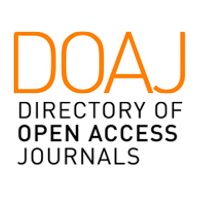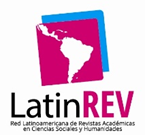Diferencias en la condición física en escolares de entornos rurales y urbanos de Murcia (España)
Abstract
RESUMEN. Los datos disponibles en la literatura científica informan de un importante descenso en los niveles de condición física en personas jóvenes. El objetivo fue analizar las diferencias en la condición física en función del contexto poblacional (rural y urbano) en un estudio descriptivo-transversal realizado con 303 escolares españoles de 8-11 años. Después de recibir el consentimiento informado, se valoró su salud relacionada con la condición física a través de la Batería ALPHA-Fitness. La prueba T detectó diferencias significativas en la fuerza muscular, capacidad aeróbica, condición física general e IMC en función del área de residencia, y que estas diferencias se mantienen cuando se realiza el análisis diferenciado por sexo. Los resultados de este estudio sugieren que los escolares que viven en áreas urbanas presentan un mejor estado de condición física, así como también un índice de masa corporal superior que los escolares de áreas rurales.
PALABRAS CLAVE. Estilo de Vida, Promoción de la Salud, Ejercicio Físico, Condición Física, Rural, Urbano.
doi:10.21703/rexe.2017301151286
Downloads
References
Albarwani, S., Al-Hashmi, K., Al-Abri, M., Jaju, D., & Hassan, M.O. (2009). Efects of overweight and leisure-time activities on aerobic itness in urban and rural adolescents. Metab Syndr Relat Disord, 7, 369–374.
Andrade Tenesaca, D. S., Ochoa Aviles, A. M., Lachat, C., Escobar, P., Verstraeten, R., Van Camp, J., Donoso, S., Rojas, R., Cardon, G., & Kolsteren, P. (2014). Physical itness among urban and rural Ecuadorian adolescents and its association with blood lipids: a cross sectional study. BMC Pediatrics, 14.
Ardoy, D. N., Fernández-Rodríguez, J. M., Chillón, P., Artero, E. G., España-Romero, V., Jiménez-Pavón, D., & Ortega, F. B. (2010). Educando para mejorar el estado de forma física, estudio Eduit: Antecedentes, diseño, metodología y análisis del abandono/ Adhesión al estudio. Revista Española de Salud Pública, 84 (2), 151-168.
Bathrellou, E., Lazarou, C., Panagiotakos, D. B., & Sidossis, L. S. (2007). Physical activity patterns and sedentary behaviors of children from urban and rural areas of cyprus. Central European
Journal of Public Health, 15(2), 66-70.
Benítez-Sillero, J.D., Morente, A., & Guillén del Castillo, M. (2010). Valoración de la condición física del alumnado de un IES rural. Trances, 2(6), 552- 563.
Carson, V., Iannotti, R.J., Pickett, W., & Janssen, I. (2011). Urban and Rural Diferences in Sedentary Behavior among American and Canadian Youth. Health Place, 17(4), 920–928.
Castro-Pinero, J., Ortega, F. B., Artero, E. G., Girela-Rejon, M. J., Mora, J., Sjostrom, M., & Ruiz, J. R. (2010). Assessing muscular strength in youth: usefulness of standing long jump as a general index of muscular itness. Journal of Strength and Conditioning Research, 24(7), 1810-1817.
Chillón P., Ortega F. B., Ferrando J. A., & Casajús J. A. (2011). Physical itness in rural and urban children and adolescents from Spain. Journal of Science and Medicine in Sport, 14(5), 417-423.
Cruz, A., Lara, A., Zagalaz, M.L., & Torres-Luque, G. (2014). Analysis and Evaluation of the Fitness of Primary School Students in Rural and Urban Areas. Apunts. Educación Física y Deportes,
(2), 44-51.
Das, P., & Chatterjee, P. (2013). Urban-rural contrasts in motor itness components of youngster footballers in West Bengal, India. Journal of Human Sport and Exercise, 8(3), 797-805.
De la Cruz-Sánchez, E., & Pino-Ortega, J. (2010). Physical activity, diet quality and weight excess in scholar children: analysis based on the residential setting of the Autonomous Community of Extremadura. e-balonmano.com. Revista de Ciencias del Deporte, 6 (1), 29-38.
De la Cruz-Sánchez, E., Aguirre-Gómez, M.D., Pino-Ortega, J., Díaz-Suárez, A., Valero-Valenzuela, A., & García-Pallarés, J. (2013). Rural – urban diferences in children’s physical itness. Revista de Psicología del Deporte, 21(2), 359-363.
Dollman, J., Norton, K., & Tucker, G. (2002). Anthropometry, itness and physical activity of urban and rural South Australian children. Pediatric Exercise Science, 14(3), 297-312.
España-Romero, V., Ortega, F. B., Vicente-Rodríguez, G., Artero, E. G., Rey, J. P., & Ruiz, J. R. (2010). Elbow Position Afects Handgrip Strength in Adolescents: Validity and Reliability of Jamar, Dynex, and Tkk Dynamometers. Journal of Strength and Conditioning Research, 24(1), 272- 277.
Gálvez, A., Rodríguez-García, P.L., Rosa, A., García-Canto, E., Pérez Soto, J.J., Tárraga, M.L., & Tárraga, P.J. (2015). Nivel de condición física y su relación con el estatus de peso corporal en escolares. Nutrición Hospitalaria, 31(1), 393-400.
Garcia-Artero, E., Ortega, F. B., Ruiz, J. R., Mesa, J. L., Delgado, M., Gonzalez-Gross, M., Garcia-Fuentes, M., Vicente-Rodriguez, G., Gutierrez, A., y Castillo, M. J. (2007). Lipid and metabolic proiles in adolescents are afected more by physical itness than physical activity (AVENA study). Revista Española de Cardiología, 60, 581-588. doi:10.1157/13107114.
Glaner, M. (2002). Nível de atividade física e aptidão física relacionada à saúde em rapazes rurais e urbanos. Revista Paulista de Educação Física, 16(1), 76-85.
Goran, M., Fields, D.A., Hunter, G.R., Herd, S.L., y Weinsier, R.L. (2000). Total body fat does not inluence maximal aerobic capacity. Int J Obes Relat Metab Disord, 24, 841-848.
Gordon-Larsen, P., Nelson, M. C., Page, P., & Popkin, B.M. (2006). Inequality in the built environment underlies key health disparities in physical activity and obesity. Pediatrics, 117(2), 417-424.
Handy, S. L., Boarnet, M. G., Ewing, R., & Killingsworth, R. E. (2002). How the built environment afects physical activity - Views from urban planning. American Journal of Preventive Medicine, 23(2), 64-73.
Hernán, M., Fernández, M., y Ramos, M. (2004). La salud de los jóvenes. Gaceta Sanitaria, 18 (1), 47-55.
Hodking, E., Hamlin, M.J., Ross, J.J., & Peters, F. (2010). Obesity, energy intake and physical activity in rural and urban New Zealand children. Rural and Remote Health, 10(2), 1336.
Joens-Matre, R. R., Welk, G. J., Calabro, M. A., Russell, D. W., Nicklay, E., & Hensley, L. D. (2008). Rural-urban diferences in physical activity, physical itness, and overweight prevalence of children. Journal of Rural Health, 24(1), 49-54.
Kristjansdottir, G., & Vilhjalmsson, R. (2001). Sociodemographic diferences in patterns of sedentary and physically active behavior in older children and adolescents. Acta Paediatrica, 90(4), 429-435.
Lèger, L. A., Mercier, D., Gadoury, C., & Lambert, J. (1988). he multistage 20 metre shuttle run test for aerobic itness. Journal of Sports Sciences, 6(2), 93-101.
Machado-Rodrigues, A.M., Coelho-e-Silva, M.J., Mota, J., Cumming, S.P., Riddoch, C., & Malina, R.M. (2011). Correlates of aerobic itness in urban and rural Portuguese adolescents. Annals of Human Biology, 38(4), 479–484.
Maestre, J. M. (2010). Connection between nutritional state and physical itness in schoolar population. Journal of Sport and Health Research, 2(2), 95-108.
Martin, S. L., Kirkner, G. J., Mayo, K., Matthews, C. E., Durstine, J. L., & Hebert, J. R. (2005). Urban, rural, and regional variations in physical activity. Journal of Rural Health, 21(3), 239-244.
McAuley, P. A., y Blair, S. N. (2011). Obesity paradoxes. Journal of Sports Sciences, 29(8), 773-782.
McMurray, R. G., Harrell, J. S., Bangdiwala, S. I., & Deng, S. B. (1999). Cardiovascular disease risk factors and obesity of rural and urban elementary school children. Journal of Rural Health, 15(4), 365-74.
Moore, J. B., Davis, C. L., Baxter, S. D., Lewis, R. D., & Yin, Z. N. (2008). Physical activity, metabolic syndrome, and overweight in rural youth. Journal of Rural Health, 24(2), 136-142.
Mota, J., Guerra, S., Leandro, C., Pinto, A., Ribeiro, J.C., & Duarte, J.A. (2002). Association of maturation, sex, and body fat in cardiorespiratory itness. Am J Hum Biol, 14, 707-12.
Neri, M., & Bargossi, A. (2000). Alimentación y ciclismo. Bilbao: Dorleta.
Ozdirenc, M., Ozcan, A., Akin, F., & Gelecek, N. (2005). Physical itness in rural children compared with urban children in Turkey. Pediatrics International, 47(1), 26-31.
Pacheco-Herrera, J. D., Ramírez-Vélez, R., & Correa-Bautista, J. E. (2016). Índice general de fuerza y adiposidad como medida de la condición física relacionada con la salud en niños y adolescentes de Bogotá, Colombia: Estudio FUPRECOL. Nutrición Hospitalaria, 33(3), 556- 564.
PanterBrick, C., Todd, A., Baker, R., & Worthman, C. (1996). Heart rate monitoring of physical activity among village, school, and homeless Nepali boys. American Journal of Human Biology,8(5), 661-672.
Reis, J. P., Bowles, H. R., Ainsworth, B. E., Dubose, K. D., Smith, S., & Laditka, J.N. (2004). Nonoccupational physical activity by degree of urbanization and US geographic region. Medicine and Science in Sports and Exercise, 36(12), 2093-2098.
Reyes, M. E. P., Tan, S. K., & Malina, R. M. (2003). Urban-rural contrasts in the physical itness of school children in Oaxaca, Mexico. American Journal of Human Biology, 15(6), 800-813.
Rodríguez-García, P.L., Tárraga, L., Rosa, A., García-Cantó, E., Pérez-Soto, J.J., Gálvez, A., & Tárraga, P. (2014). Physical Fitness Level and Its Relationship with Self-Concept in School Children. Psychology, 5, 2009-2017.
Rodríguez-García, P.L., Gálvez, A., García-Cantó, E., Pérez-Soto, J.J., Rosa, A., Tárraga, L., & Tárraga, P.L. (2015) Relationship between the Self-Concept and Muscular Strength in Southern Spanish Children. J Psychol Psychother 5(6), 222. Doi:10.4172/2161-0487.1000222
Ross, J., Pate, R., Caspersen, C., Damberg, C., & Svilar, M. (1987). The national children and youth itness study II: home and community in children’s exercise habits. Journal of Physical Education, Recreation and Dance, 58, 85-92.
Rosa-Guillamón, A., y García-Cantó, E. (2016). Relationship between physical itness and mental health in primary school children. Rev.Ib.CC. Act. Fís. Dep, 5(2), 31-42.
Rosa, A., Rodríguez-García, P.L., García-Cantó, E., & Pérez-Soto, J.J. (2015). Niveles de condición física de escolares de 8 a 11 años en relación al género y a su estatus corporal. Ágora para la EF y el Deporte, 17(3), 237-250.
Ruiz, J.R., Ortega, F.B., Gutiérrez, A., Sjöström, M., & Castillo, M.J. (2006). Health-related physical itness assessment in childhood and adolescence; A European approach based on the AVENA, EYHS and HELENA studies. Journal of Public Health, 14, 269-277.
Ruiz, J. R., España Romero, V., Castro Piñero, J., Artero, E. G., Ortega, F. B., & Cuenca García, M. Jiménez-Pavón, D., Chillón, P., Girela-Rejón, M.a J., Mora, J., Gutiérrez, A., Suni, J., Sjöstrom, M., & Castillo, M. J. (2011). Batería ALPHA-Fitness: test de campo para la evaluación de la condición física relacionada con la salud en niños y adolescentes. Nutrición Hospitalaria, 26(6), 1210-1214.
Sobngwi, E., Mbanya, J. C. N., Unwin, N. C., Kengne, A. P., Fezeu, L., Minkoulou, E. M., Aspray, T.J., & Alberti, K.G. (2002). Physical activity and its relationship with obesity, hypertension and diabetes in urban and rural Cameroon. International Journal of Obesity, 26(7), 1009-1016.
Tomkinson, GR., & Olds, T.S. (2007). Secular changes in pediatric aerobic itness test performance: the global picture. Med Sport Sci., 50, 46-66.
Tsimeas, P. D., Tsiokanos, A. L., Koutedakis, Y., Tsigilis, N., & Kellis, S. (2005). Does living in urban or rural settings afect aspects of physical itness in children? An allometric approach. British Journal of Sports Medicine, 39(9), 671- 674.
Tucker, P., & Gilliland, J. (2007). he efect of season and weather on physical activity: A systematic review. Public Health, [Review], 121(12), 909-922.
Vicente-Rodríguez, G., Rey-Lopez, J. P., Mesana, M. I., Poortvliet, E., Ortega, F. B., Polito, A., & Moreno, L. A. (2012). Reliability and intermethod agreement for body fat assessment among two ield and two laboratory methods in adolescents. Obesity, 20(1), 221-228.
Wang, Y. F. (2001). Cross-national comparison of childhood obesity: the epidemic and the relationship between obesity and socioeconomic status. International Journal of Epidemiology, 30(5),1129-1136.
Wilczewski, A., Sklad, M., & Krawczyk, B. (1996). Physical development and itness of children from urban and rural areas as determined by EUROFIT test battery. Biology of Sport, 13, 113-26.
Downloads
Published
Issue
Section
License
Open Access Policy
This journal provides immediate open access to its content, based on the principle that offering the public free access to research fosters greater global knowledge exchange.
License
The REXE Journal, “Journal of Studies and Experiences in Education,” published by the Faculty of Education at the Universidad Católica de la Santísima Concepción, is distributed under a License. Creative Commons Atribución 4.0 Internacional.





